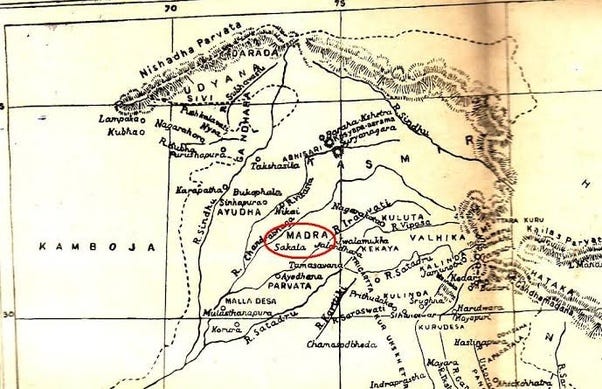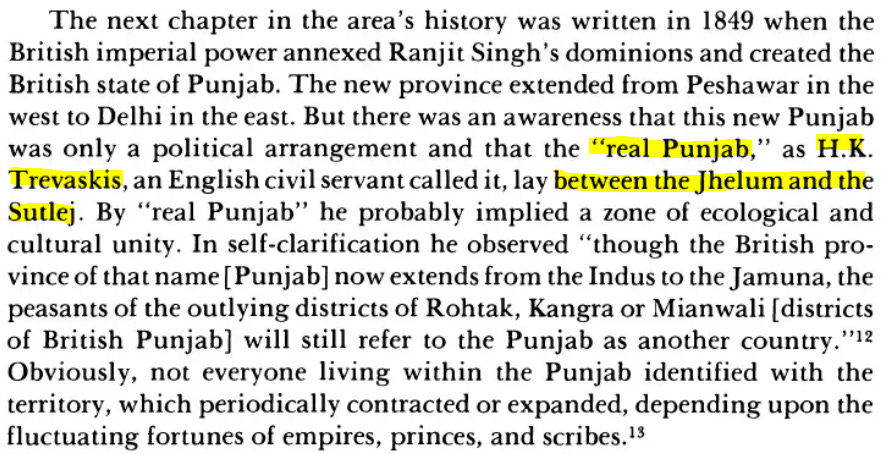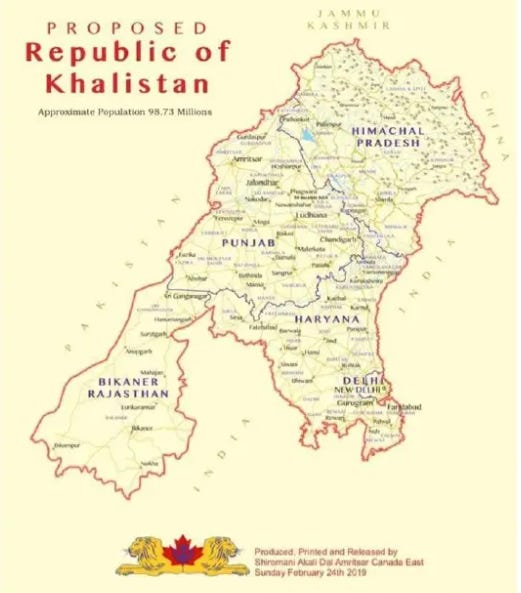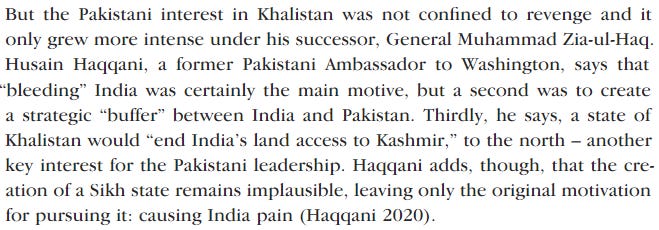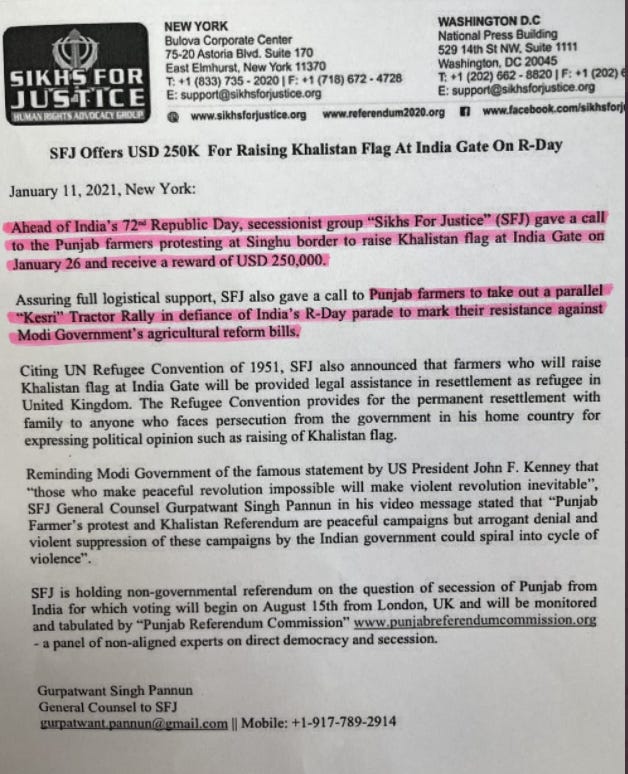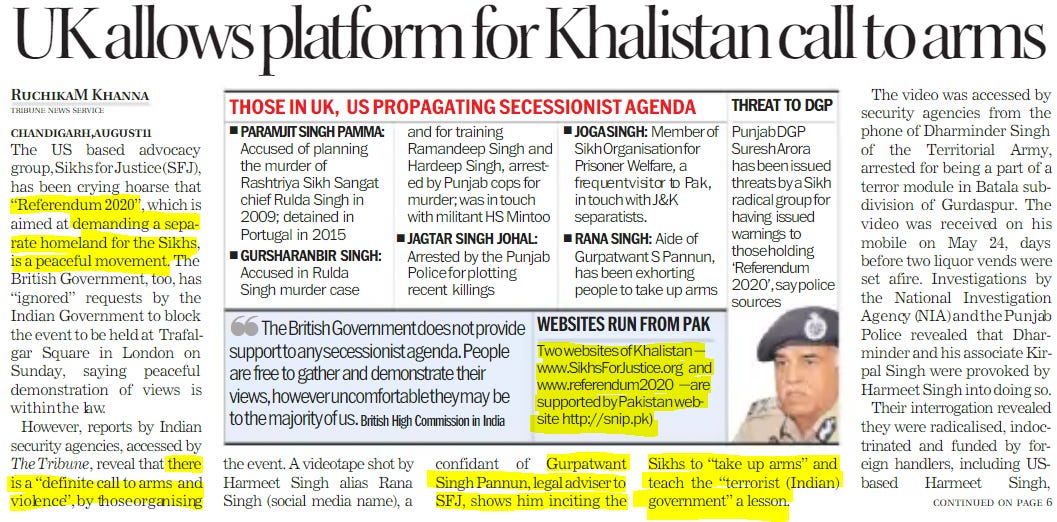Insightful newsletter of Drishtikone: Issue #223 - Of Cocks and Men
What is Punjab? A bastardized poor man's version of the land that was known as Sapta Sindhva. The Indian Punjab is not even that. Khalistanis are fighting for their own psychopathic dreams.
Image by Thomas Vanhaecht from Pixabay
“All stories are true,” Skarpi said. “But this one really happened, if that’s what you mean.” He took another slow drink, then smiled again, his bright eyes dancing. “More or less. You have to be a bit of a liar to tell a story the right way. Too much truth confuses the facts. Too much honesty makes you sound insincere.” ― Patrick Rothfuss, The Name of the Wind
To know what you want, you should know who you are. Really. Not an imaginary, delusional idea of yourself. But who is the real you?
And, that kind of contemplation is usually in short supply amongst most violent idiots who fancy themselves as revolutionaries. For they really enjoy the psychopathic violence that their own idea of religious adherence enables them to wield. Irrespective of the reality of their professed ideals.
Punjab, or the land of five rivers, is the withered down version of Sapta Sindhva, the land of seven rivers. A land that the tenth Sikh Guru called Madra Desh. A desh or state where the resident king called Vedic scholars from Kashi for Vedic recitation. These scholars were known as Vedis. Or Bedis. The family name of Guru Nanak.
A land that extended from Indus to Sutlej was known by many names. Punjab was the one with the most restricted sense of the region. And, the Indian side of Punjab is not even that!
That, and the delusional dreams of Pakistan’s ISI is what the obedient, servile lowlifes known as Khalistanis are really fighting for. Backed by an establishment whose own nation is disintegrating and going bankrupt at a rapid pace.
Unfortunately for India, its own political wretches have come to back these evil and violent forces to plunge the country into yet another era of imperial slavery.
They don’t care whether their own kids will have a life worth living or a nation to call their own, as long as this despicable breed can enjoy their own sorry lives.
That really is the context and the backdrop of what are being fancifully called the “Farm Bill" protests.
The entire discussion of Khalistan and the identity of Sikhs should be viewed in terms of the contemporary Sikh metacommentary. How have Sikhs and their groups described themselves as? Both in terms of cultural and geographical identity.
digging into the meta-commentary by Sikhs
What is a metacommentary for the different cultures?
In his book “The Interpretation of Cultures” anthropologist Clifford Geertz has an essay titled “Deep Play: Notes on the Balinese Cockfight.”
In this essay, considered to be Geertz’s seminal work, the author uses cockfighting (sabungan) to discuss the social dynamics within the Balinese culture.
The second section of his essay “Of Cocks and Men” discusses how the cocks which the Balinese men use in the “battles” have become a metaphor for their own egos. In fact, the word for cock - Sabungan - is also used for hero, man-parts, and champion. Quite akin to slang in English.
Geertz finally concluded that cockfight in effect is a commentary by the Balinese on themselves. It embodies the networks, social relationships, and the dynamics between kith and kin in a village within the over-arching rules that govern Balinese life.
In that sense, the Balinese cockfight became a metacommentary (how people describe themselves to themselves via their cultural stories) of that culture.
The movement for Khalistan is predicated on the sharp and abrupt delineation of Sikh identity vis-a-vis others. However, the Sikh identity was not so clearly defined. More importantly, in contemporary times, it has been linked inextricably with Punjab.
what was and is Punjab?
But what about Punjab itself? What is Punjab? From where to where?
Historically speaking, specifically when most of the Sikh icons, including the Gurus, were present, what was Punjab really?
Let us start with how Guru Gobind Singh, the last Guru called this region - Madra Desh. Not Punjab! (Source). From Adi Granth:
ਪਟਨਾ ਸਹਰ ਬਿਖੈ ਭਵ ਲਯੋ॥ ਮਦ੍ਰ ਦੇਸ ਹਮ ਕੋ ਲੇ ਆਏ॥
Patna Shehar Vikhe Bhava layo; Madra desh Hum ko Le Aaye!!
I was born in Patna city and from whence I was brought to Madra desh.
In another verse, in Bachitra Natak, Guru Gobind Singh shares how the Madra Desh Raja called the Vedic scholars (Vedis or Bedis) from Kashi to recite the Vedas. (Source)
ਪਠੇ ਕਾਗਦੰ ਮਦ੍ਰ ਰਾਜਾ ਸੁਧਾਰੰ ॥
Pathe Kagandam Madra Raja Sudharam!!
The messengers sent by the king came to Kashi and gave the message to all the Bedis
It is interesting to note that the Sikhs have associated the surname/caste Bedi with Guru Nanak Dev and those with this family name are said to be direct descendants of the first Guru.
In Sikhism, the Bedi caste became preeminent because of the birth into it of Guru Nanak, founder of the faith. Although the caste acquired sacred character which is enjoyed not only by the descendants of Guru Nanak but by all those born into this caste group, yet this inherited sanctity has not altered the social status of the people within the caste. (Source)
Little realizing of course, that Bedi is another form of Vedi or the Vedic scholars.
Way back in ancient times, this northern area of India did not just have five rivers. It had seven. That is why it was called Sapta Sindhva. The seven rivers being Sindhu/Indus, Vitsta/Jhelum, Parushni/Ravi, Vipasha/Beas, Shutudri/Satluj, Asivani/Chenab, and Saraswati.
ऋग्वेद में' सप्तसिन्धवः' अर्थात् सात नदियों का वर्णन मिलता है, जो सिन्धु, वितस्ता, परुष्णी, विपाशा,शुतद्री,असिक्नी और सरस्वती नाम से प्रसिद्ध है। वितस्ता नदी को झेलम नाम से जाना जाता है।काश्मिर में इसे वेथ नदी कहा जाता है।परुष्णी नदी को ''रावी '' कहा जाता है।किन्तु पहले इसे इरावती भी कहा जाता था।व्यास नदी का नाम 'विपाशा' या 'विपाश ' भी था।शुतुद्री का नाम सतलुज है। असिक्नी आजकल 'चन्द्रभागा या चेनाब है।सरस्वती को आर्यों की पुण्यात्मा नदी कहा गया है। (Source)
When the Persians came, they called the region Hafta Hindva - a distortion of the Sanskrit words. This region extended from Gandhara (Kandahar) to Kurukshetra in Haryana. Haryana, btw, was called so because that region was irrigated by Saraswati and was very green! The Chinese traveler Hsiian Tsang also called this region sukhabhumi, because it was a land of plenty and contentment.
So what was Punjab (land of five rivers) or Sapta Sindhva (land of seven rivers) really?! Even at the time of Maharaja Ranjit Singh and during the British era, its expanse was understood to be between Indus and Sutlej. Which would mean most of Pakistan’s Punjab all the way to Haryana.
So when the Khalistanis, specifically, organizations like the Sikhs for Justice (SFJ) define Khalistan in terms of this map, you know that their context has nothing to do with Sikhism or Punjab’s historic identity. Rather, they are just a front for Pakistan’s malafide establishment.
And, that is precisely what it is. Khalistan is a project of Pakistan!
The basis of this chaos had been laid in 1973, ironically after Mrs. Indira Gandhi had done a humiliatingly bad deal - known as the Shimla Agreement - with the then Pakistan PM Zulfiqar Ali Bhutto. Tarek Fatah has shared how Zulfiqar Ali Bhutto inadvertently revealed in a small and insignificant reporter’s meet in 1973 that they are planning to carve out a separate “Bangladesh” within India but on the side of Pakistan.
Pakistan created the entire idea and “movement” of terrorism that became Khalistani terrorism. Their objectives were not just vengeance anymore.
The goal was not just to take revenge as may have been laid out by the Pakistani leadership initially. The objectives also include:
Creating a “strategic buffer” between India and Pakistan
End India’s access to Kashmir
The Khalistani forces have now converged - with the backing of foreign funders to back the so-called protests against the farm bills.
SFJ, an organization banned by the Government of India (Source) due to their secessionist activities is at the forefront of these protests.
They have openly funded the so-called farmers to create violent unrest in India and also back its secessionist “Referendum 2020”. (Source) They are now going a step further and offering prize money for anyone who will raise the Khalistan flag at the India Gate on Republic Day.
Despite its arguments, the Sikhs For Justice (SFJ) is focused on one thing - the disintegration of India and the furthering of terrorism.
Worse, foreign governments like those in UK and Canada assume the role of detached observers when conspiracies to attack India and Indians are hatched within their territories. This is from “The Sunday Tribune” on August 12, 2018.
In 2018, the Public Report on the Terrorism Threat to Canada had a small but significant change in how one component of threat was described.
“Extremists who support violent means to establish an independent state within India” replaced the usual and well-understood phrase which had been carefully selected by Canada’s national security experts - “Sikh (Khalistani) extremist ideologies and movements.” (Source)
If the Indians and the Indian government are thinking that the Western governments like the UK, US, and Canada will act any better than that of Pakistan in promoting, backing, and even offering protection to the Khalistani terrorists, even those who have killed citizens of these countries as in the case of Air India (AI-182) bombing in 1985 where 329 people died - then they are living in fool’s paradise.
The war on terror for India will not find these countries fighting along with a democratic state, but against it. And, that is the reality.
As for the Khalistanis, they don’t give a rat’s arse about Sikhism or the Gurus. They have their Sabungan (cocks) shaped egos to fight for.
market corner: 10 quick bytes
Indian Railways breaks another stereotype! Runs first goods train with an all-woman crew- more
Amazon launches Amazon Academy for JEE, competitive exams preparation - more
Jefferies expects home prices to surge by over 10% in the next two years - more
Indian automaker Mahindra & Mahindra Ltd has cut more than half of the workforce at its North American unit - more
Paytm Money launches discounted derivative trading; now trade Futures & Options - more
I-T Dept launches faceless penalty scheme. proposes to set up a National Faceless Appeal Centre (NFAC), Regional Faceless Appeal Centres (RFACs) and Appeal units (AUs) which will allocate a recommendation for penalty made under the faceless assessment program - more
Amazon Prime Video to offer a mobile-only plan in India, starting at Rs 89 per month - more
Indian Railway Finance Corporation (IRFC) IPO to open on Jan 18 - the issue size is 178.20 crore shares, comprising a fresh issue of 118.80 crores in a price band of Rs 25-26 per share - more
Growth of Aakash Educational Services - Small-town dreams to $1 billion valuation - more
Union Budget 2021 goes paperless; hard copies not to be printed for first time in history - more
nota bene
Grooming Jihad: Anwar Ali Shaikh, 39, was arrested on Monday on charges of murdering his wife, Poonam Chavan, on the basis of a commuter’s eyewitness account. Police said the couple had got married only a month ago and the motive for the alleged murder is not clear. Poonam was whirling around the vertical rod at the entrance to a railway coach and lost her life after Anwar allegedly let go of her. (Source)
Indigenous Arms deal: The Cabinet Committee on Security, headed by Prime Minister Narendra Modi, on Wednesday approved a ₹48,000-crore proposal to buy 83 Tejas LCA (light combat aircraft) Mk 1A aircraft for the Indian Air Force. The 40 LCAs already ordered by the IAF are in the initial operational clearance (IOC) and the more advanced final operational clearance (FOC) configurations. The LCA Mk-1A will come with additional improvements over the FOC aircraft, making it the most advanced Tejas variant so far. (Source)
Hotels sans Housekeeping: Under pressure from the BCCI to “stick to the earlier commitment” and provide the Indian team with basic amenities at the team hotel such as access to a gymnasium, swimming pool and timely service of food and beverages, Cricket Australia (CA) has begun taking steps to ease restrictions and make facilities available to the Indian cricketers in Brisbane. However, simple facilities such as housekeeping and room-service such as housekeeping and room-service had still not begun at the five-star hotel. (Source)
Another Pak tunnel: Indian security forces on Wednesday discovered another tunnel built by Pakistani security officials to push terrorists into Jammu and Kashmir, people familiar with the matter said. This is the second tunnel found by Indian security forces since November last. There were 930 ceasefire violations by Pakistan in 2020, a 54% increase over the 605 instances the previous year. (Source)
Intention of RTI important: The Delhi High Court on Tuesday said that whenever information is sought under the Right to Information (RTI) Act, especially by disgruntled persons in the garb of transparency, the authorities have to see whether the details asked are for some personal or vested interest. Justice Pratibha M Singh made the observation while dismissing a plea by a man who had sought details of the persons who had been appointed at the President’s secretariat as multi-tasking staff. (Source)
India’s importance to tech firms: ‘If You Build for India, You Build for the World’: Signal Co-Founder Brian Acton. Signal is run by a non-profit and its co-founder, Brian Acton was also one of the founders of WhatsApp. Acton and Jan Koum sold WhatsApp to Facebook in 2014. In 2017, Acton quit the company — at the time, he said it was over a dispute with Facebook regarding the monetization of WhatsApp. (Source)
video corner:
Today, let us listen to Albert Einstein explain his E=mc2 formula. It is a short video but gives goosebumps to those who look at the strides made in the last century in terms of Quantum Physics and the Special Theory of Relativity by some brilliant minds.
Today’s ONLINE PAPER: Check out today’s “The Drishtikone Daily” edition. - THE DRISHTIKONE DAILY
TOOLS WE USE (our secret recipe): Here are some tools we use to streamline our work and do things in a lean and agile manner.
SUPPORT DRISHTIKONE: If you consider our work important and enriching and would like to contribute to our expenses, please click on the button below to go to the page to send in your contribution. You can select the currency (for example, INR or USD, etc) and the amount you would like to contribute. Contribute to Drishtikone
If you like this post - please share it with someone who will appreciate the information shared in this edition
If you like our newsletter, please share it with your friends and family





